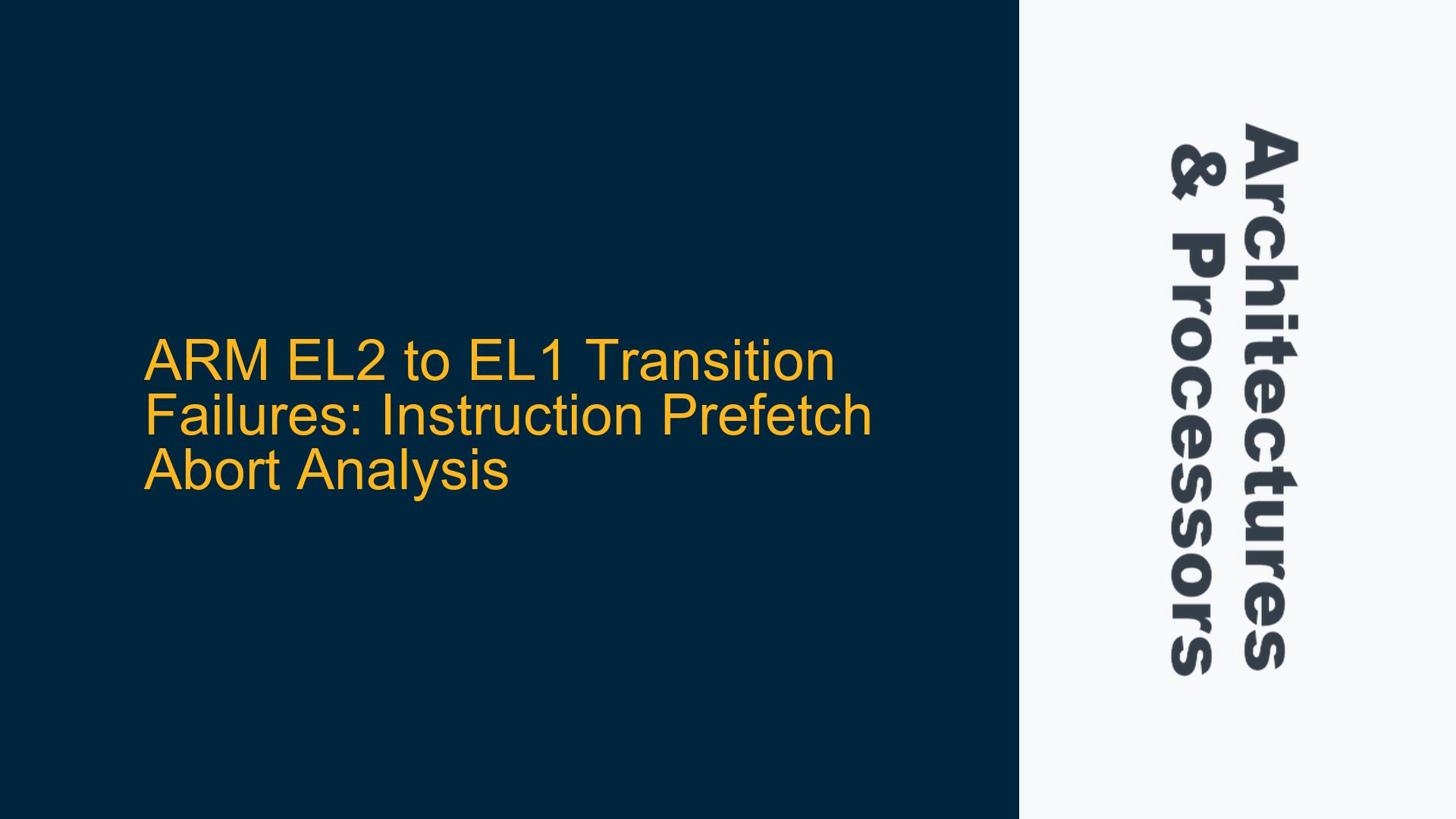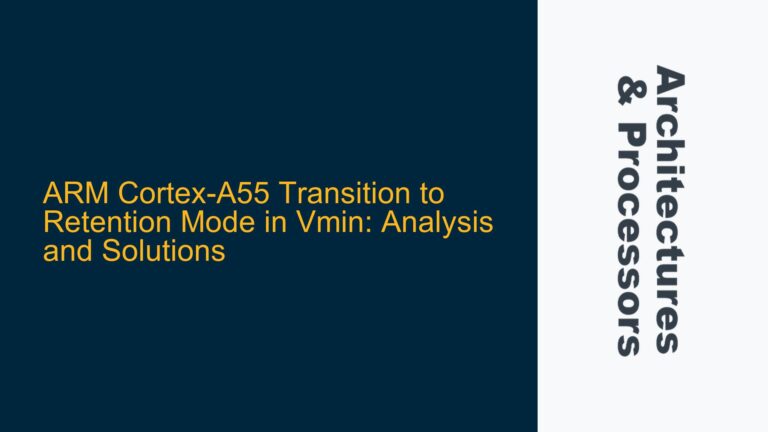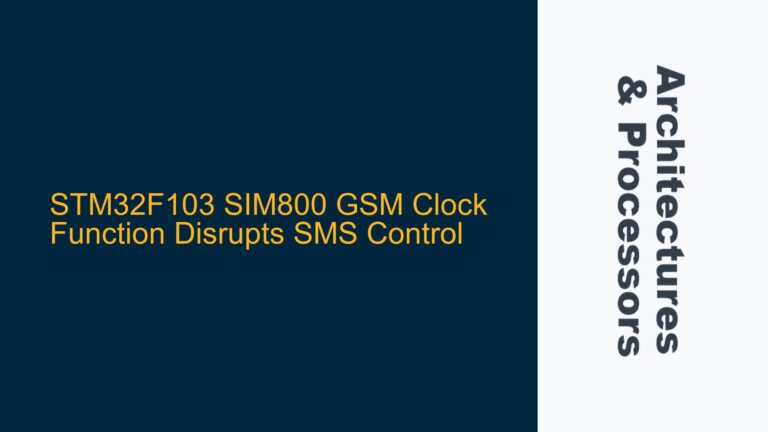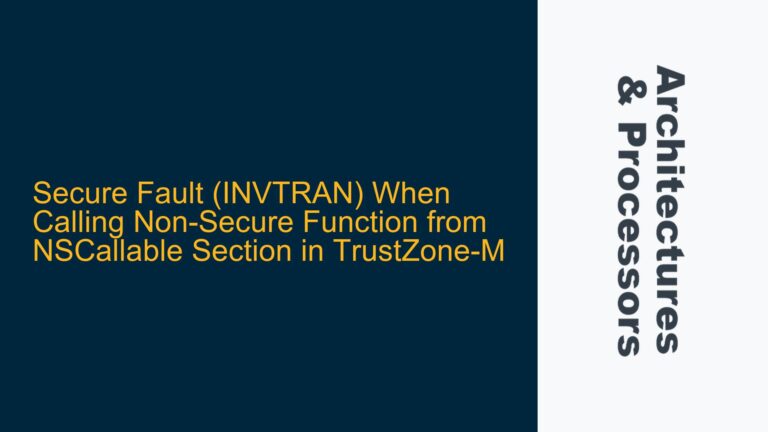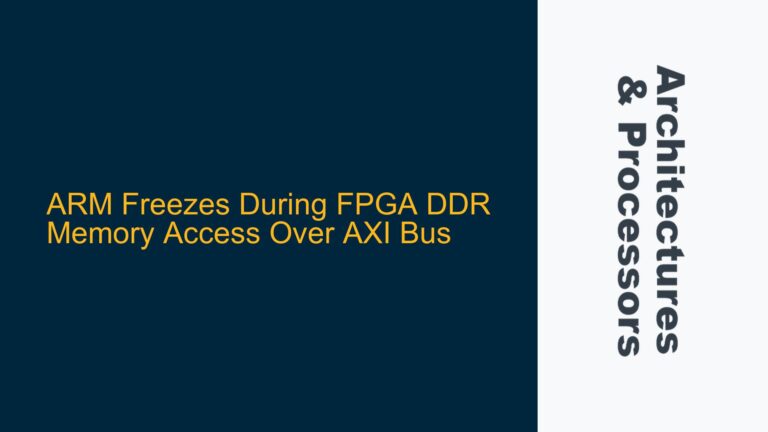EL2 to EL1 Transition with Instruction Prefetch Abort on ERET
The core issue revolves around the failure to transition from Exception Level 2 (EL2) to Exception Level 1 (EL1) in an ARMv8-A architecture. The transition is attempted by setting up the necessary system registers, including sctlr_el1, spsr_el2, elr_el2, and hcr_el2, followed by an eret instruction. However, instead of successfully transitioning to EL1, the system triggers an instruction prefetch abort with the Fault Address Register (FAR) pointing to the intended load address. The Exception Syndrome Register (ESR) indicates an illegal configuration, specifically an Instruction Abort exception class (EC = 0x21). This suggests that the processor is unable to execute the instruction at the target address, even though the address is valid and mapped correctly.
The failure manifests consistently across multiple scenarios, including attempts to return to EL1 with the MMU disabled and stage 2 translation not enabled. The fact that the same instruction abort occurs regardless of whether the target address is in EL1 or EL2 memory suggests a fundamental misconfiguration in the transition setup. The ESR’s IL (Instruction Length) bit being set further indicates that the processor encountered an illegal state during the transition, but the exact cause is not immediately apparent from the initial setup.
Misconfigured HCR_EL2 and SCTLR_EL1 Settings
The primary cause of the instruction prefetch abort lies in the misconfiguration of key system registers, particularly hcr_el2 and sctlr_el1. The hcr_el2 register is set to zero, which disables all hypervisor configuration options, including the critical setting for enabling a 64-bit EL1. Without this configuration, the processor may not correctly interpret the execution state of EL1, leading to an illegal state when attempting to execute instructions. Additionally, the sctlr_el1 register is initialized with 0x30d00800, which disables the MMU and caches but does not account for all RES1 (Reserved, should be 1) and RES0 (Reserved, should be 0) bits. This incomplete initialization can result in unpredictable behavior during the transition.
Another contributing factor is the lack of proper initialization for the Generic Timers and coprocessor traps. The Generic Timers are essential for maintaining system timing and synchronization, and their misconfiguration can lead to unexpected behavior during exception level transitions. Similarly, coprocessor traps must be disabled to allow EL1 access to necessary system resources. The absence of these configurations in the initial setup further exacerbates the issue.
The spsr_el2 register is configured with 0x3c9, which masks FIAD interrupts and sets the execution state to EL1h (SPx). While this configuration is mostly correct, it does not account for other potential interrupt sources or system state requirements. The combination of these misconfigurations creates an unstable environment for the transition, resulting in the instruction prefetch abort.
Comprehensive EL2 to EL1 Transition Setup and Debugging
To resolve the instruction prefetch abort and ensure a successful transition from EL2 to EL1, the following steps must be taken:
-
Initialize Generic Timers and Coprocessor Traps:
The Generic Timers must be configured to allow EL1 access. This involves setting thecnthctl_el2register to enable EL1 access to the physical and virtual counters. Additionally, thecntvoff_el2register should be zeroed to ensure proper timer synchronization. Coprocessor traps must be disabled by setting thecptr_el2andhstr_el2registers appropriately. This ensures that EL1 has unrestricted access to necessary system resources. -
Configure HCR_EL2 for 64-bit EL1:
Thehcr_el2register must be configured to enable a 64-bit EL1 execution state. This involves setting bit 31 (64-bit EL1) and bit 29 (disable HVC instructions). These settings ensure that the processor correctly interprets the execution state of EL1 and prevents illegal state transitions. -
Properly Initialize SCTLR_EL1:
Thesctlr_el1register must be fully initialized, accounting for all RES1 and RES0 bits. The correct initialization value should include enabling necessary features such as the MMU and caches, while ensuring that reserved bits are set appropriately. This prevents unpredictable behavior during the transition and ensures a stable execution environment for EL1. -
Set Up SPSR_EL2 and ELR_EL2:
Thespsr_el2register should be configured to mask all interrupts and set the execution state to EL1h. Theelr_el2register must point to the correct load address for EL1 execution. Additionally, the stack pointer (sp_el1) and exception vector base address (vbar_el1) should be migrated from EL2 to EL1 to ensure a seamless transition. -
Execute ERET and Verify Transition:
After completing the above steps, theeretinstruction should be executed to transition to EL1. The transition should be verified by checking the current exception level and ensuring that the processor is executing instructions at the intended load address. If any issues persist, the ESR and FAR should be examined to identify the root cause of the abort.
By following these steps, the transition from EL2 to EL1 can be achieved without triggering an instruction prefetch abort. The key is to ensure that all system registers are properly configured and that the execution environment is stable before attempting the transition. This comprehensive approach addresses the root causes of the issue and provides a reliable solution for transitioning between exception levels in ARMv8-A architectures.
| Register | Configuration Value | Purpose |
|---|---|---|
cnthctl_el2 |
0x3 |
Enable EL1 access to Generic Timers |
cntvoff_el2 |
0x0 |
Zero virtual counter offset |
cptr_el2 |
0x33ff |
Disable coprocessor traps to EL2 |
hstr_el2 |
0x0 |
Disable coprocessor traps to EL2 |
hcr_el2 |
`(1 << 31) | (1 << 29)` |
sctlr_el1 |
0x30d00800 |
Initialize SCTLR_EL1 with RES1 and RES0 bits set correctly |
spsr_el2 |
0x3c5 |
Mask interrupts and set EL1h execution state |
elr_el2 |
Load address of EL1 image | Set return address for EL1 execution |
sp_el1 |
Migrated from EL2 | Set stack pointer for EL1 |
vbar_el1 |
Migrated from EL2 | Set exception vector base address for EL1 |
This table summarizes the key register configurations required for a successful EL2 to EL1 transition. Each register must be carefully initialized to ensure a stable and predictable execution environment. By addressing the misconfigurations and following the outlined steps, the instruction prefetch abort can be resolved, allowing for a seamless transition between exception levels.
